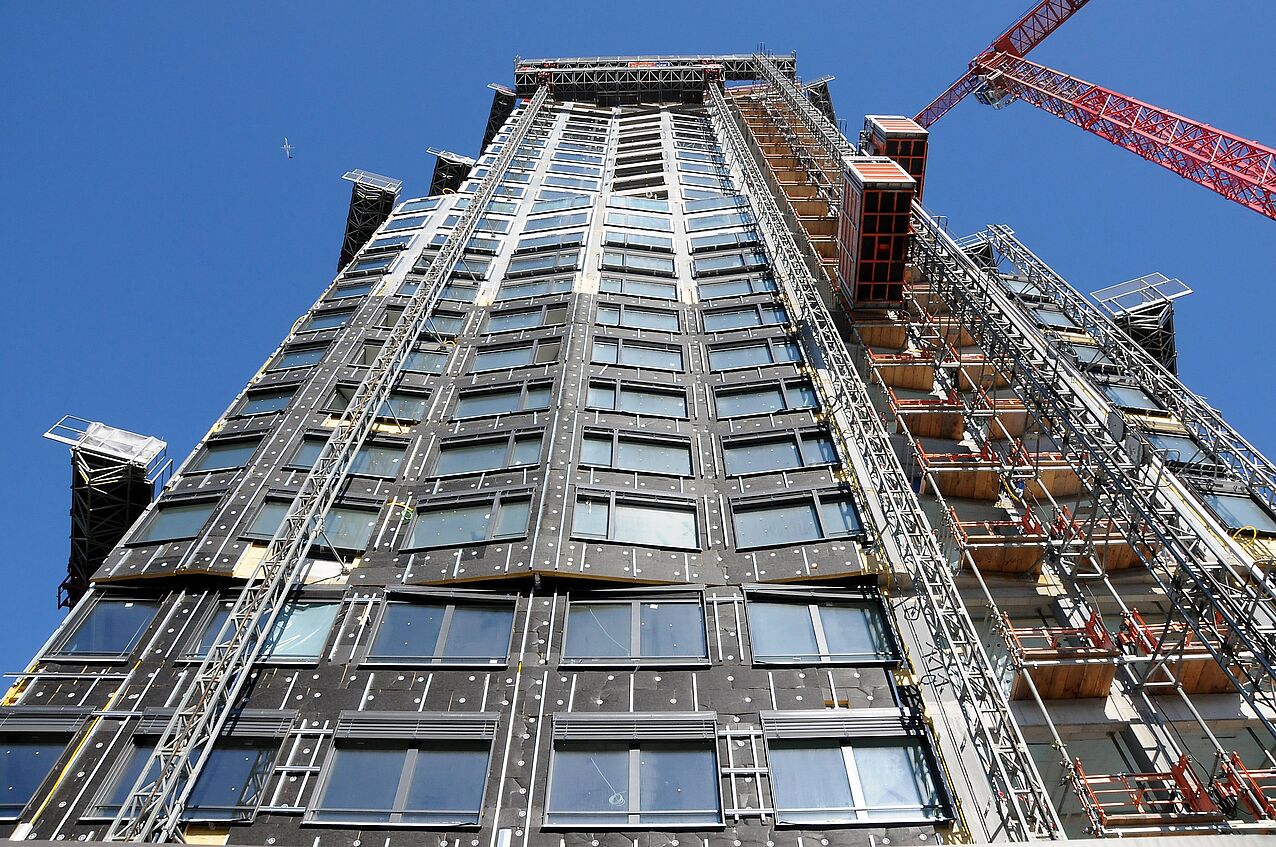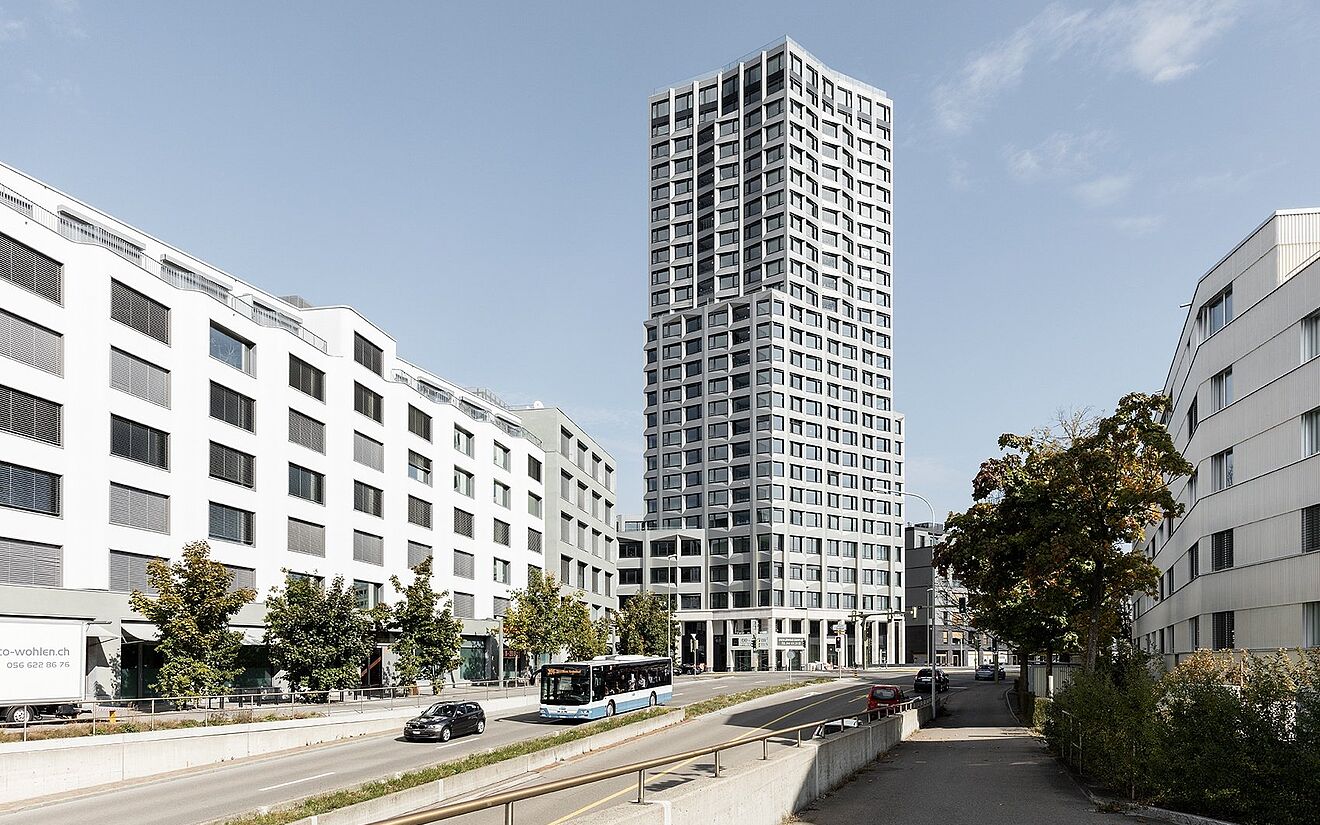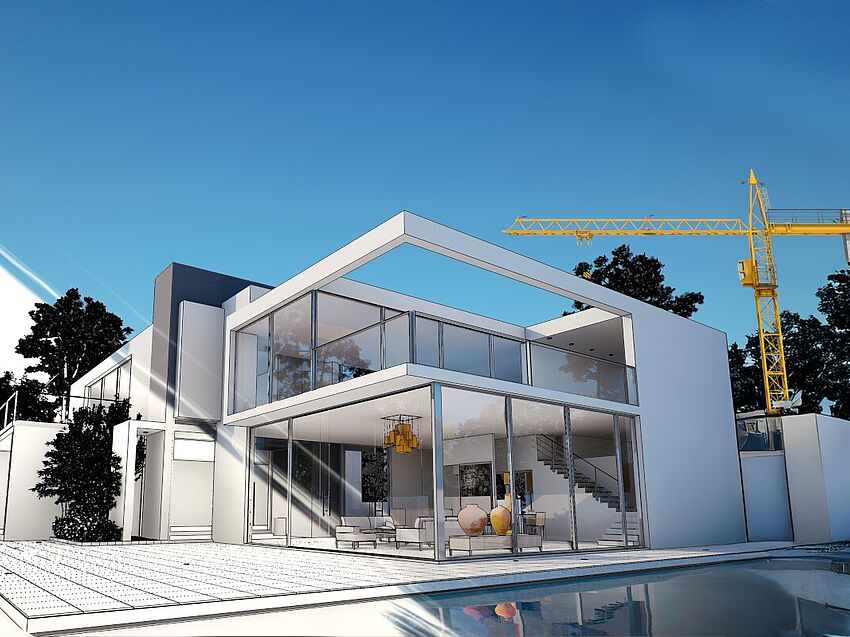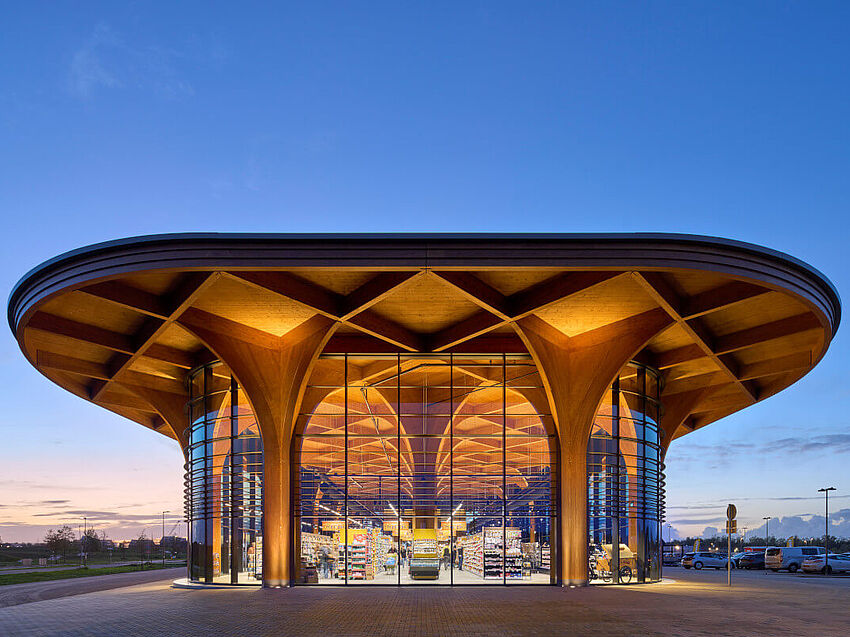How Digital Design to Build Workflows Revolutionize Structural Engineering
An 80-meter high skyscraper with folded facades and an upward-narrowing plan - that's the Limmat Tower in the new district of Dietikon. It stands for innovation, uniqueness and perspective. The special challenge with this project was the structural design. In this article, you will learn what solutions the civil engineers of Synaxis AG from Zurich developed for this concrete construction in frame construction design.

Limmatfeld on the way to the future
In the city of Dietikon, not far from Zurich, a new district has been in the making since 2002: Limmatfeld. There are already numerous new buildings, such as office and business premises, in the approximately 87,000 square meter area. By 2019, living space for up to 3,000 residents and around 600 jobs are to be created here. Limmat Tower, which was constructed between 2011 and 2016, towers far above the community. It also serves as a kind of gatekeeper, since it is located at the entrance to the new district.
Facade of projections and recesses
The planners from huggenbergerfries Architekten from Zurich oriented themselves to early role models from America when designing the shape of the Limmat Tower: The building is classically structured and vertically emphasized. The facade is striking, which starting at the 5th upper floor consists of projections and recesses, creating an irregular folding. In addition, the pentagonal building plan tapers, once at the 10th upper floor and once at the 15th upper floor. In total, the high-rise comprises 25 upper floors. The surface of the facade reflects the light and weather of the surroundings. This makes the tallest high-rise in the city very lively and multi-faceted.

Challenges in the structural design
The engineering office Synaxis AG was responsible for the structural design. The employees faced the challenge that no direct force transmission was possible at various points due to the folded facade. At the building recesses, they had to absorb or at least deflect the supporting forces. Due to the surrounding parapet, separate fire protection was also required in order to prevent fire flashovers. Despite all of this, the planners wanted to find a simple solution for the reinforcement of Limmat Tower.
A solid foundation
The architects and engineers decided on a concrete construction in frame construction design for this project. The supporting structure of Limmat Tower consists of three elements:
Reinforced steel columns along the facade and in the building interior,a stabilizing utility service shaft,flat slabs made of reinforced concrete.The foundation of the high-rise is made up of a combination of piles and slabs. The structural engineers initially planned to construct the columns in the interior of the building. They discarded this idea and moved the columns up to the edge of the ceiling. Only those columns that are stacked on top of each other in all floors are load-bearing. The rest of the columns were used by the civil engineers for the window rabbets or as supporting structures for the vertical facade elements.
The planners found the following solution for the column loads in the area of the building recesses: They designed individual apartment walls in the respective underlying story to be load-bearing. The load is thus deflected onto the bearing facade columns. The parapets between the columns consist of reinforced concrete and surround the building.

Innovative luxury with a view
The Limmat Tower today accommodates 98 luxurious apartments and eight penthouse apartments. The unconventional geometry makes the building the new landmark of the city. It is a unique construction for the entire region. In addition, the city's tallest high-rise offers both an excellent perspective as well as a spectacular view. In our white paper on the Limmat Tower, you will learn how ALLPLAN Engineering supported the civil engineers greatly during the structural design.




